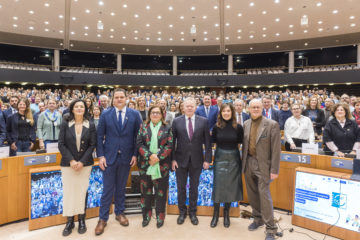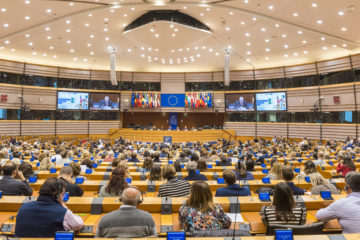The place of development and LEADER in European policies
What needs changing?
Rural areas encounter a number of difficulties that were put aside for a long time, such as: a shutdown of public services, lagging behind in terms of economic development, a lesser access to culture, only to name a few.
In 2022, the Commission came up with the long-term vision for Rural Areas and as part of it, the Rural Pact. This is a real hope to start changing things.
There have been successes in rural areas, and in particular thanks to the LEADER programme, which is synonymous with modern, dynamic, organised rural areas that are open to the EU. LEADER, through Local Action Groups, helps responding to all types of societal issues. Such a success is not only promoted by ELARD, but also by the European Parliament, the European Committee of the Regions and the European Commission.
LEADER is a method, a tool, in which already established stakeholders are experienced. It is not a European fund but a European rural development programme with a method and fundamentals: experimentation, innovation, networking, cooperation, capitalisation and dissemination of good practices.
LEADER makes visible the benefits of the European project in local areas. It brings Europe to every town, every village, and when applied smoothly, contributes to reducing Eurosceptic tendencies. LEADER is a direct tool that works against the Geography of Discontent, as defined in DG REGIO’s publication from 12 June 2023.
Within the CAP, LEADER is the tool that contributes most to the LTVRA. Yet stakeholders are increasingly asked to do more with less.
This, LEADER and CLLD, is our vision, and our approach. It is already in place and stakeholders on the ground are experimented in using them. However, there is a severe lack of funding for rural development. This approach and these tools need more funding.
In addition, the management of LEADER/CLLD, and the use of multi-funding have become increasingly complex from one programming period to the next – the withdrawal of the EAFRD from the Common Provisions Regulations has highlighted further the issue. To name a few countries, we can take Sweden, Portugal or several French regions that have decided not to prolong the use of multi-fund CLLD in the next programming period.
We call for a simplified framework, and better working conditions.
Let us not forget that when we talk about rural development, we are not talking about institutions, companies, or farms. We are talking about people: local stakeholders, rural citizens of Europe, to whom we should be able to offer a better life.
Is it reasonable to assume that we can develop employment, revive public services, strengthen social cohesion, set up new modes of transport, fix young people in their territory, give better life conditions to people of the rural territories with only 5% of the Common Agricultural Policy budget?
Our practical policy recommendations for the future
ELARDS asks for an independent, reasonable reliable financial resource for a rural development by local actors with a multi-sectorial approach under simplified and unanimous European rules.
Regarding financial resources, ELARD outlined several possibilities. These are just suggestions that deserve to be explored hand in hand with the various interested instances of the European Commission.
- If the approach chosen is to be to strengthen multi-fund, then it needs to be simplified and made mandatory for all member states.
- If the approach chosen is to be a directly managed programme, it will need to ensure the rapprochement of European and local levels, the autonomy of Local Action Groups, and the principle of the bottom-up approach.
- If the approach chosen is to be a new fund dedicated to local rural development, it will have to be adequately funded.
Rural development is not just a part of the CAP. On the other hand, the CAP is only one part of rural development.

